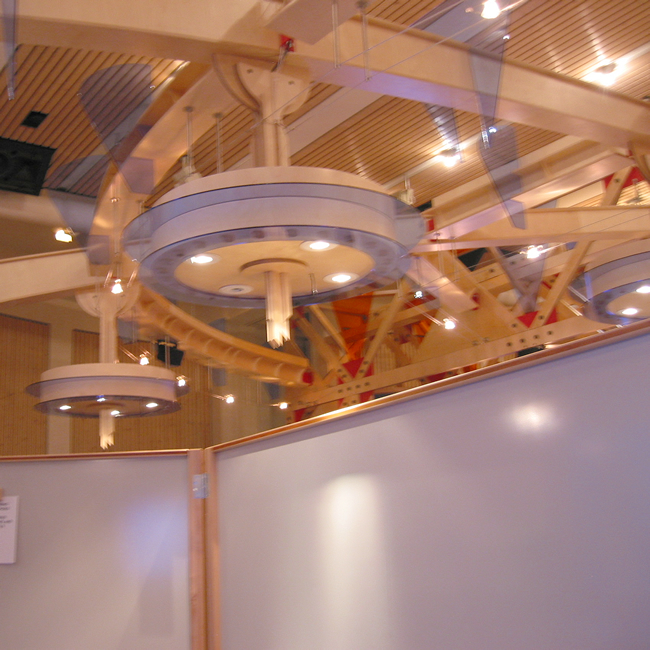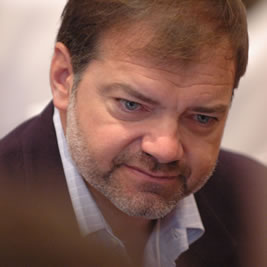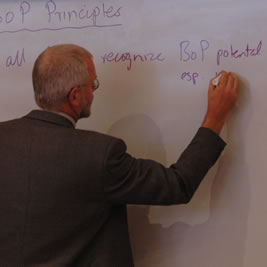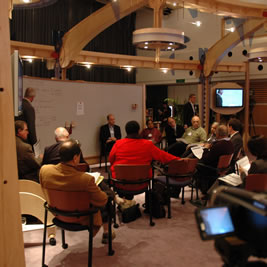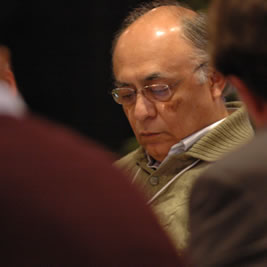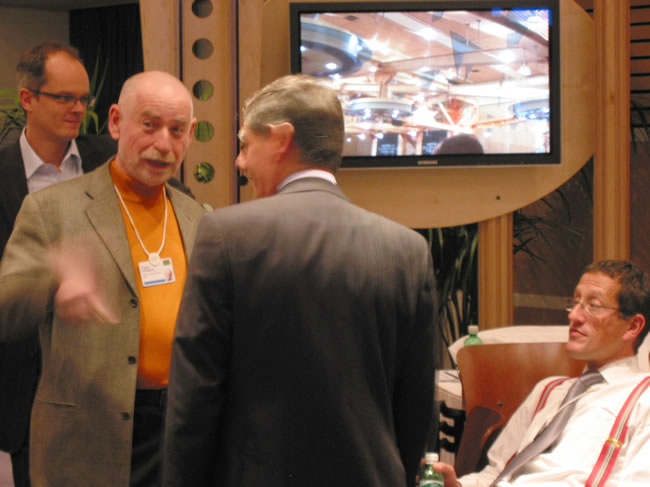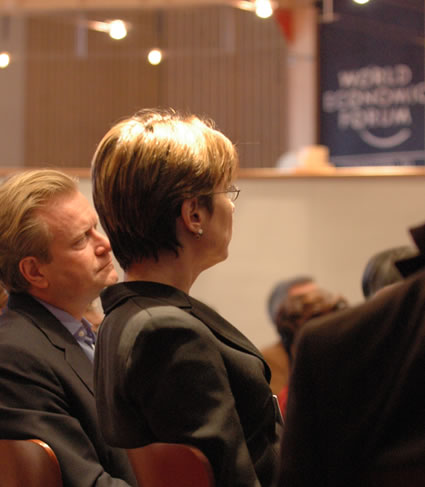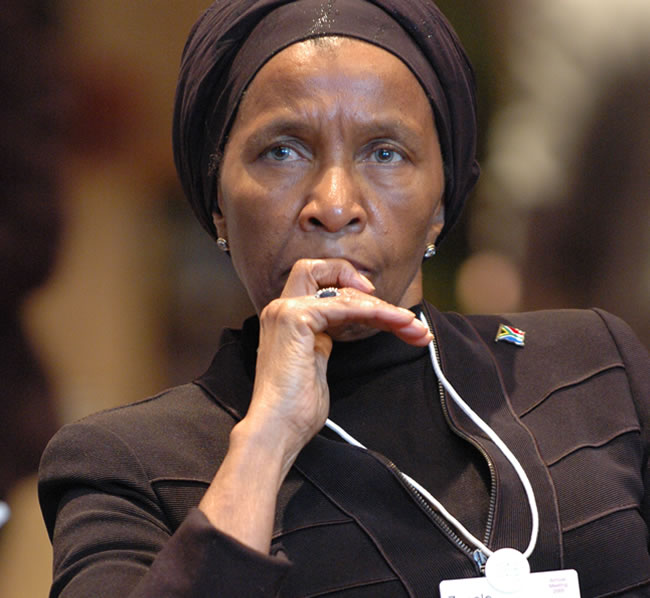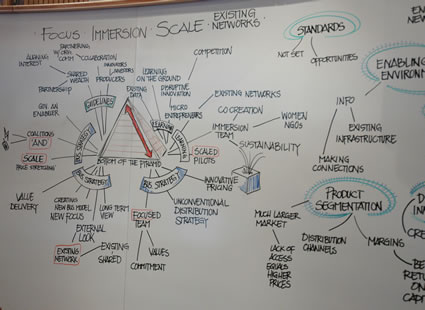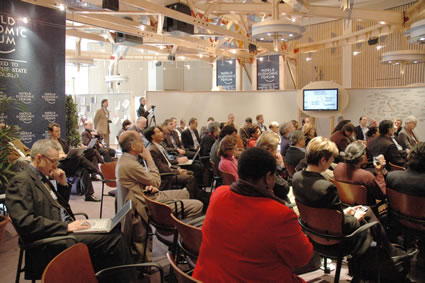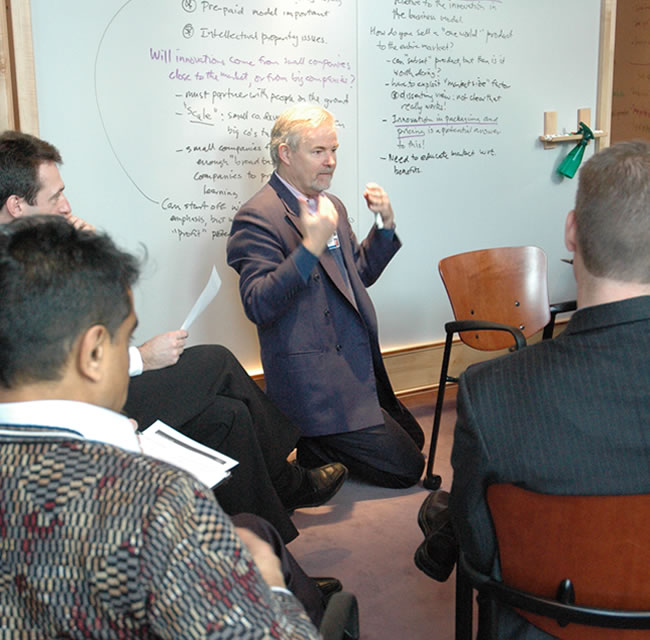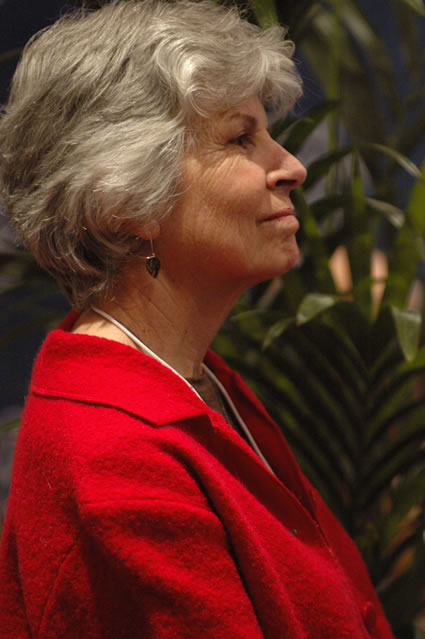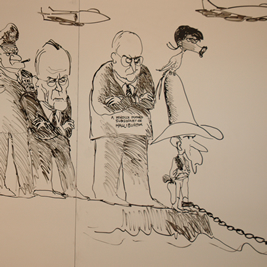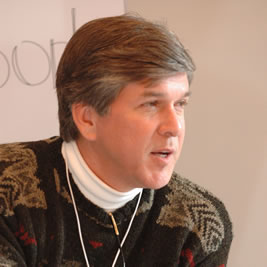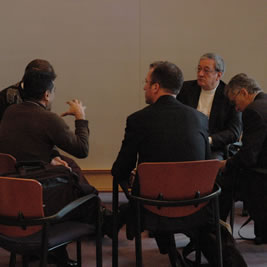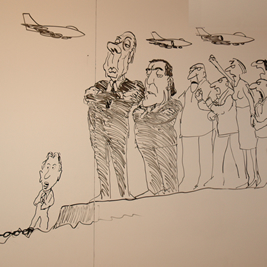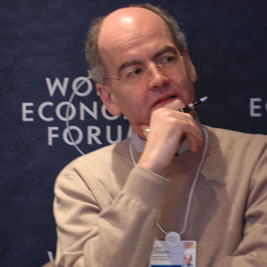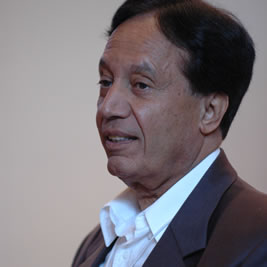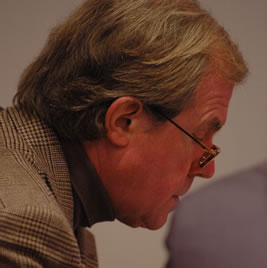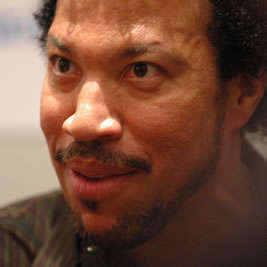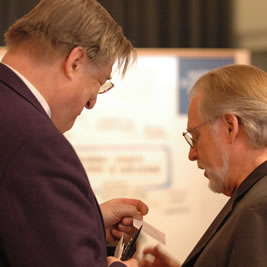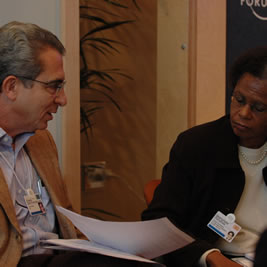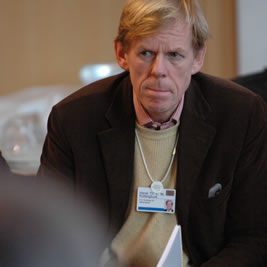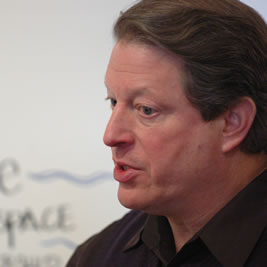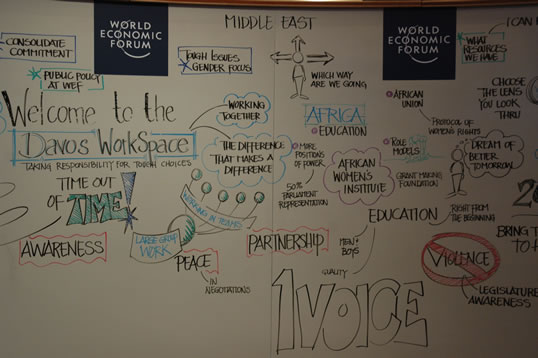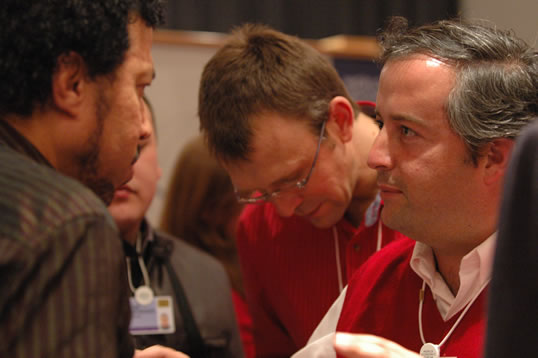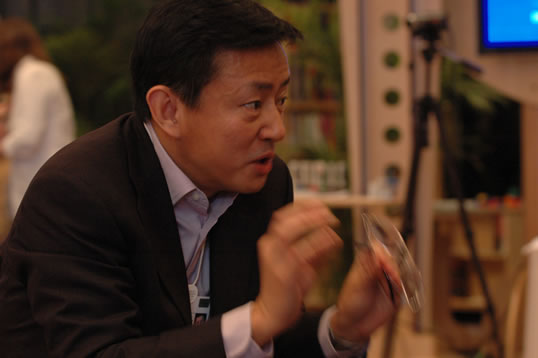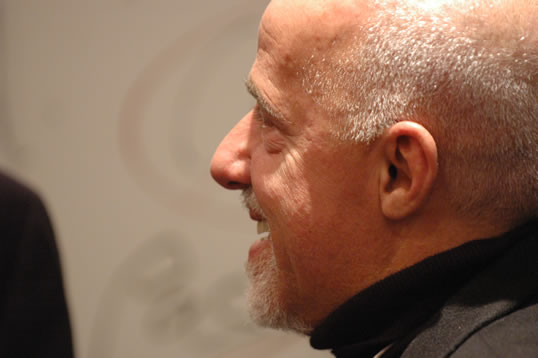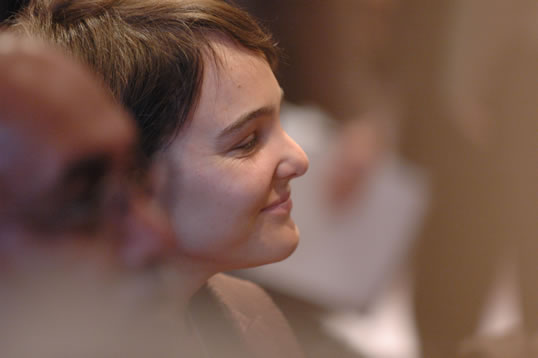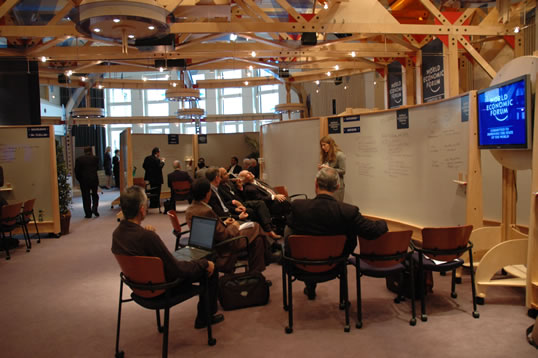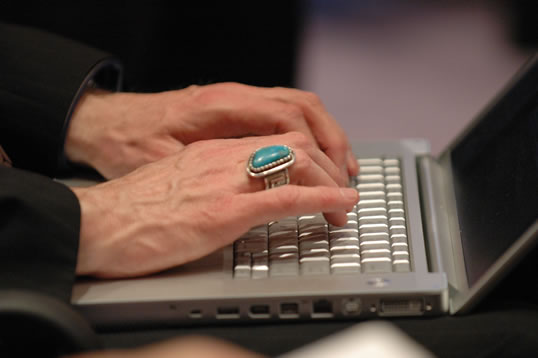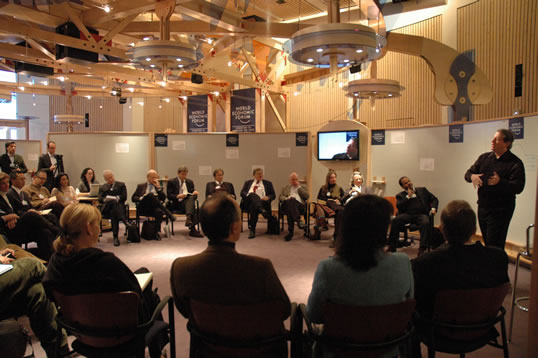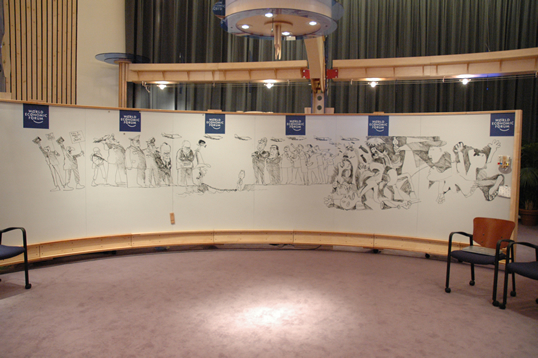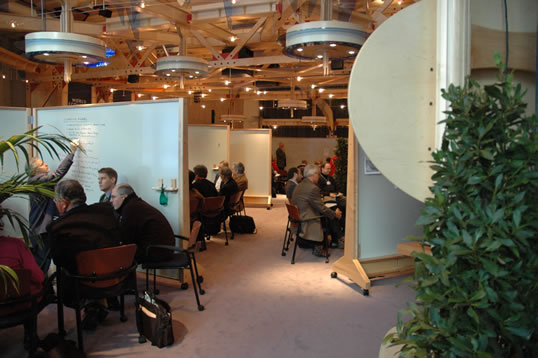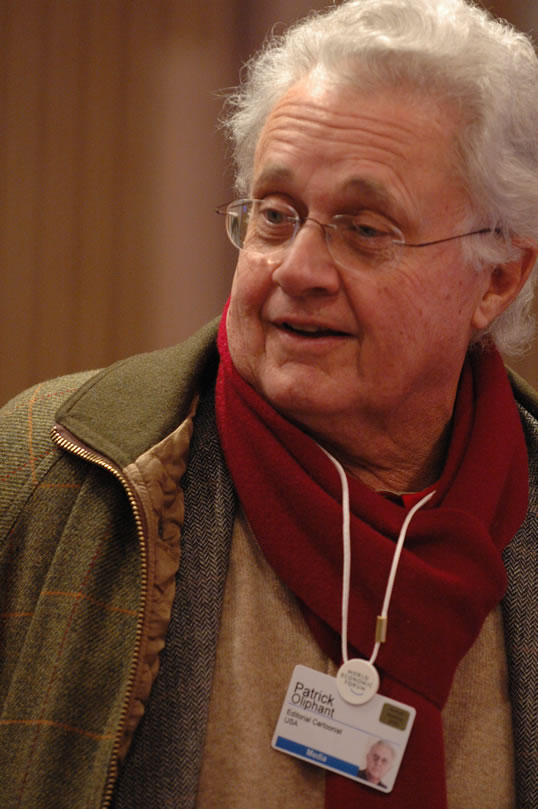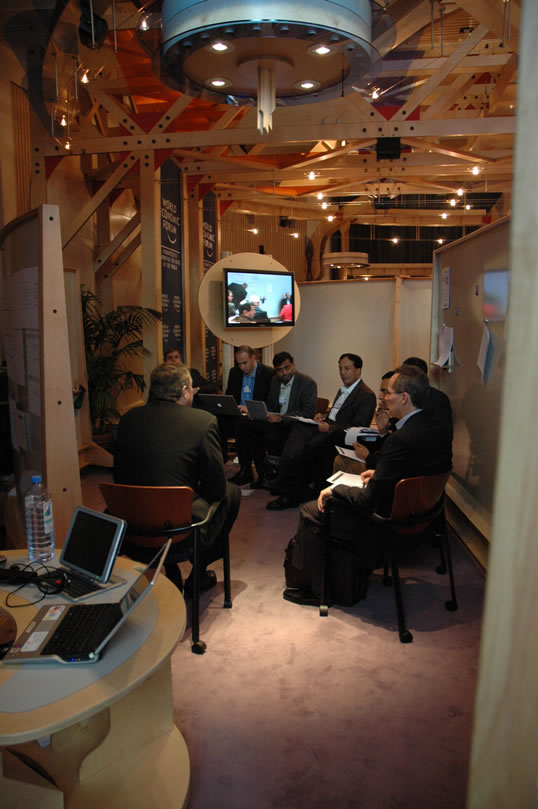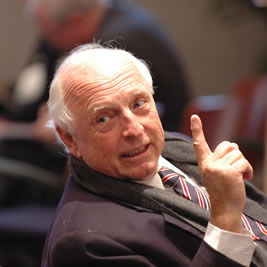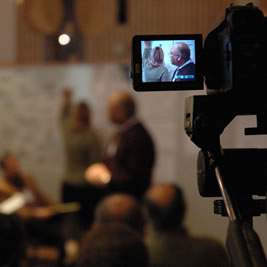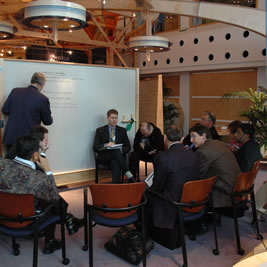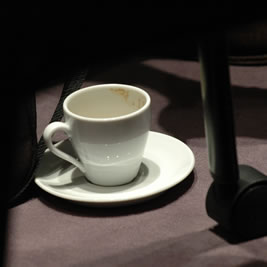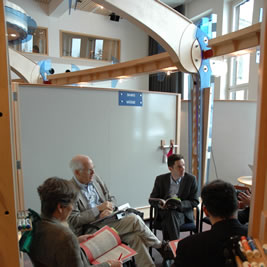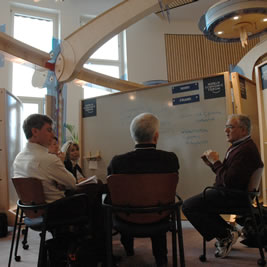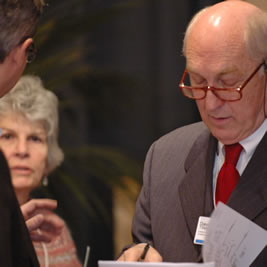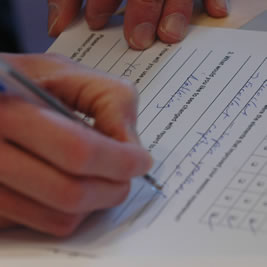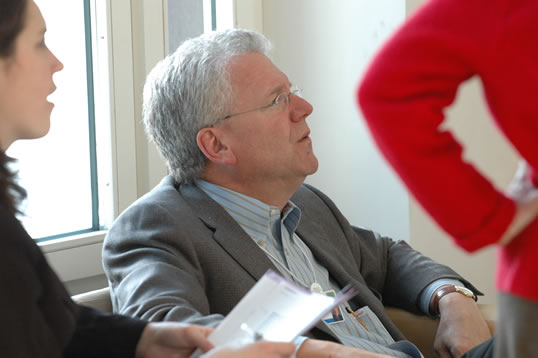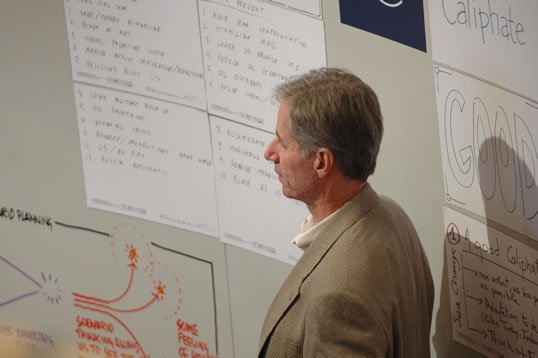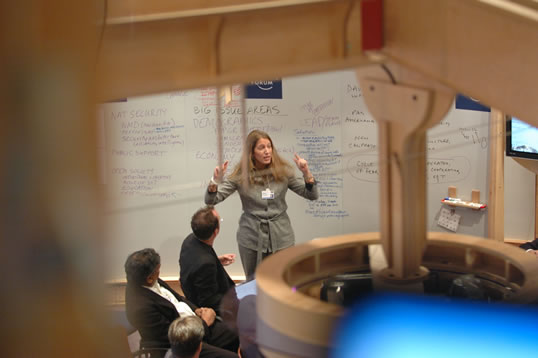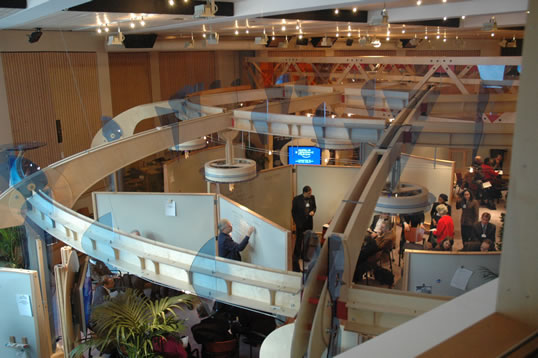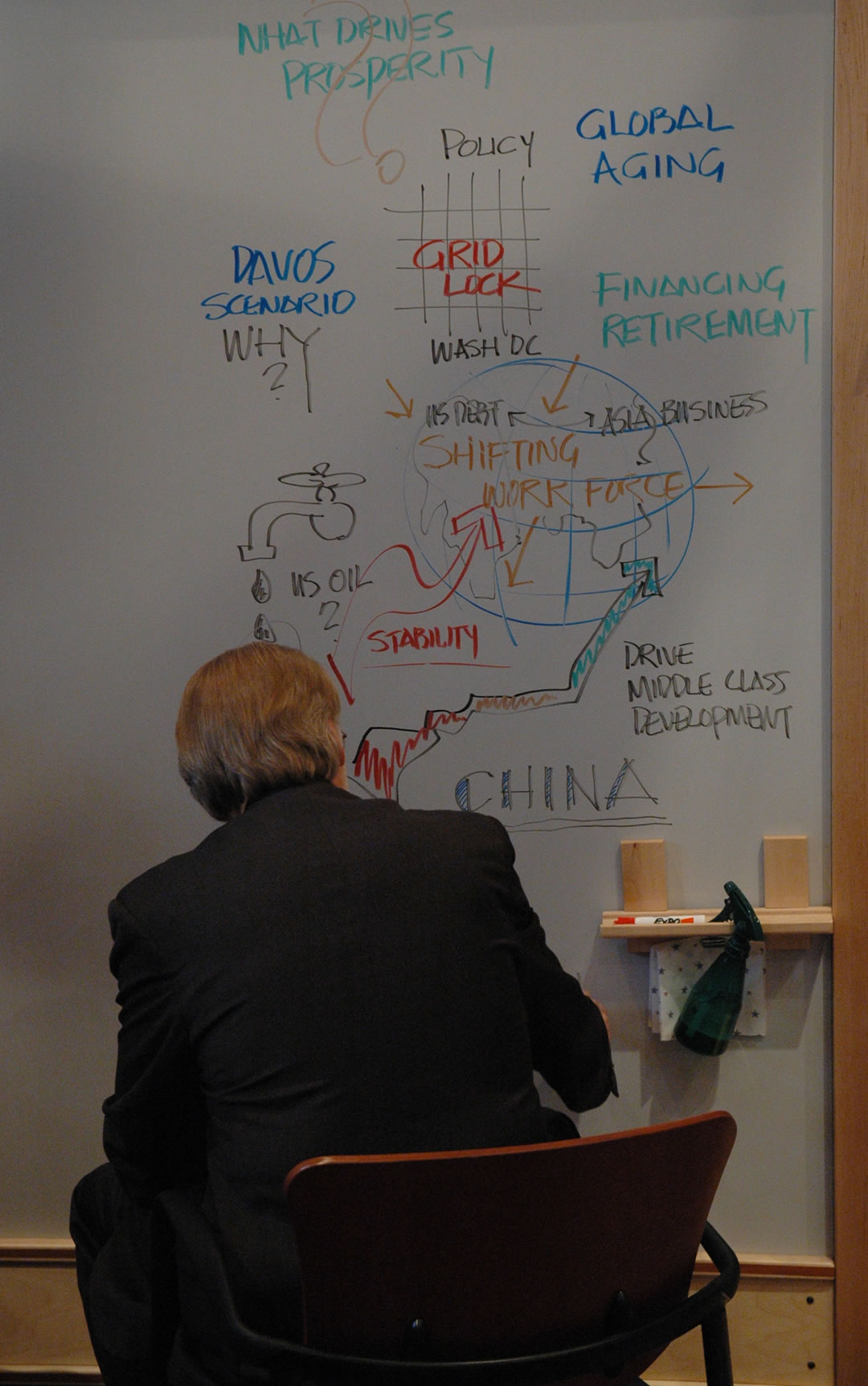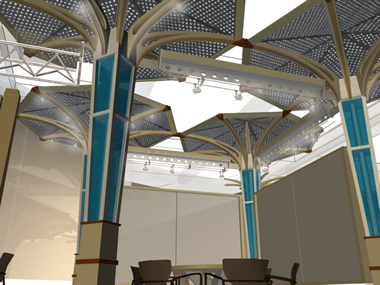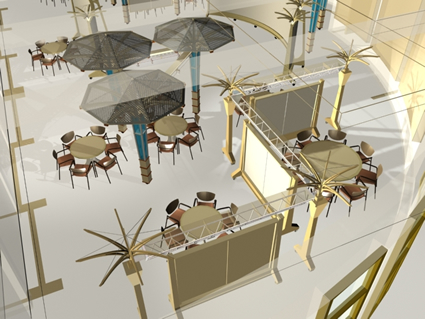Collaboration
@ the WEF Annual meeting
|
| There
is perhaps no place on earth like Davos during the WEF
Annual Meeting. This has been true for over a third of
a century. At this DAVOS the goal was to engage members
differently. To increase interaction. To enhance design
and collaboration. To take on hard issues and to come
to some conclusions - an action agenda - by the end of
the meeting [link].
These objectives were accomplished and the stage was
set for a greater scale of experimentation in the future. |
|
| The
DAVOS WorkSpace was designed and installed by
AI [link] of the MG Taylor Corporation [link] and
operated, during the Annual Meeting, by MG Taylor, TomorrowMakers
[link],
Architects of GroupGenius [link] and
members of the MG Taylor KnowledgeWorker network
in conjunction with Patrick Frick and members of the
World Economic Forum. 17 sessions were conducted over
a 5 day period. Over a thousand Forum members and Fellows
used
the environment and its processes. |
|
| The
theme of this Forum was TOUGH ISSUES. Scenarios
were employed to stretch member’s thinking and to
focus the dialog on existing and future challenges. CEOs
were
asked to re-conceive their organizations. These dialogs
were not always easy. In addition to global and organizational
issues, workshops also addressed personal development and
growth. That which divides people from one another was
explored and the development new perspectives encouraged [link]. |
|
| In
2001, our workshops were one and a half hours long. This
year, they were two and a half to three and a half hours.
Still too short for optimum results. One more hour allowing
another iteration of work and the productivity of the sessions
could be doubled. There is a natural progression in the
creative process that has to be respected. Emergence [link] also
has a natural set of requirements. Environment, process
and augmentation tools have to be configured to support
the work. |
|
| I
am always enchanted when watching people collaborating.
Over time, their expressions change and their body language
starts to send a different message.The mind becomes more
intense - the body more relaxed. They fall into a restful
action state that can be sustained for hours. I think
that this is human expression in its most real form.
The best comes out when this state is achieved. Content
shifts. Things get done that otherwise cannot be accomplished.
GroupGenius is released and put to work. |
|
| It
is critical that “place” be established by the environment.
The typical meeting room is generic, establishes no brand
and lacks a “center” and focus. The relationship between
people is established by default. Only a few work modes
are supported. The variety is low
and people are“cued” to act in traditional ways.
Prospect and refuge are lacking. While used to such environments,
people are not comfortable in them.They do not relax
and rarely achieve a natural rhythm of dialog and work. |
|
| During
a workshop exploring the relationship between the USA
and Europe [link], Patrick Oliphant drew a cartoon nearly
30 feet long. This expressed the division that has grown
during the past few years and made an interesting backdrop
to a dialog that sought to hear all sides and reconcile
differences. The Forum offers and neutral space and
rare opportunity for this to happen. The WorkSpace
provides amenity and processes that facilitate difficult
interactions. |
|
| In
today’s world of sound bites and prepackaged responses
played out in measured time-fragments, truth is rarely
spoken. Words become weapons rather that the means of
communication and understanding. Co-design and collaboration
is lost to positioning and negotiation. Complexity cannot
be effectively dealt with this way. People need time.
Time to understand and reach across cultural barriers.
Time to design solutions together that are not based
on compromise. Trust is built by working productively
together. |
|
| While
Forum members worked, the KnowledgeWorkers captured their
words and images, prepared upcoming sessions with workshop
leaders, connected the “Red Treads” that developed between
the various sessions and the the rest of the
Forum activities, and assisted participants with graphics.
Today, the WorkSpace is unique. The mission [link] is
to make this kind of facility ubiquitous and normal.
Global systemic, complex issues requires GroupGenius
and the instant distribution of work products. |
|
| The
Davos WorkPlace is a knowledge factory. All modes of
communication and work are supported. This work is “manufactured”
into work products that support ongoing implementation
efforts and future generations of work. As an RDS,
the environment can be moved where required. The 05 Annual
Meeting was the first use of this tool a Davos. There
remain many applications to be explored. This use was
not the
end of the story - it is the beginning. |
|
| In
this environment, large work walls allow users to write
large and share their ideas. Information can be displayed.
All this can be worked and reworked until the ownership
of the result belongs to the team doing the work. Multiple
iterations of idea development are easily supported.
Ideas become universal and developed - not the property
of
one vantage point. Teams can form and re-form as required.
The group energy is held in one space while many local
areas of work can proceed at their own pace. |
|
| The
RDS [link] creates
a “room within a room” that allows the physical and psychological
space to be shaped to
fit the work process being used while also responding
to the time of day. The DAVOS WorkSpace can accommodate
80 people as one room or be divided
into
two
spaces of
50 plus each. Music, lighting and media can be controlled
in each of these two areas and within sections of
them. Power and multimedia wiring are supplied through
the Armature [link] and
is within easy use for all. |
|
| The 2005 WEF RDS was a successful deployment. It fulfilled over 90% of its intended design mission. A few more deployments and the system would reach, with incremental refinement, its full capacity. However, because of the short time period and change in Forum leadership, which prevented collaboration among all members of the VaueWeb, the RDS was a very good rendition of the wrong solution. What was designed and delivered was an environment capable of performing all of functions of a NavCenter and the entire scale and scope of the Taylor Method. The graphics (below and rh column) are the first concept sketches of a system designed to evolve in concert with the World Economic Forum’s employment of new interactive methods, as well as, an increased number of meeting in various parts of the world. This new design is modular horizontally and vertically allowing the armature system to reconfigure in real time in consort with the WorkWalls and WorkFurniture. |
| Reduced weight and complexity, not sacrificing any functionality, while still creating an environment conducive to making strong memory [link: memory in the taylor method] is the goal of this new design. These specifications are demanding and require exacting design trade-offs while avoiding compromise. A new level of integration of work processes, technology and environment has to be reached along with a new level of time, cost and complexity economy. A fully functional RDS has long been the goal of MG Taylor and this design will draw heavily on R&D performed over the last several years. The new RDS platform design team is Bill Blackburn, Brian Ross and myself. The Tree concept will take several iterations of Design/Build/Use before it is a mature solution. |
|
|
| In September, 2005 a design process was started to transfer the Taylor Method to the Forum and to create a next generation RDS that was tightly tuned to the aspects of the Method that the Forum actual employes at any given time and place. This design intent requires a lighter and more flexible environment that can be shipped all over the world with the capability to be configured just as required for each specific deployment and the actual techniques to be useded. The design of this RDS will require active involvement of the WEF and its partners. This collaborative process started the week of this posting. The design sketches are proof-of-concept studies that demonstrate the design strategy agreed to by MG Taylor and the Forum leadership in September. The design will evolve as all the issues are considered: budget, flexibility, technology, process modules, weight and logistics, branding, participant group size, and the nature of the host environments. |
| The story of the development of this design is told elsewhere [link: next generation rds for the wef]. This system will not be ready for the 06 Annual Meeting although some elements may be. The first full deployment will be at one of the regional meetings sometime between April and June. It will take about three deployments to refine and build out the entire system. It is expected that the system will have to, in time, support more than one deployment at a time and that its use at the Davos Annual Meetings will expand beyond the WorkPlace now housed in the Aspen Room. The goal is that this Method becomes ubiquitous and transparent at all WEF sessions. |
|
|
\
posted: January 31, 2005 • updated November 13, 2005 |
|
|
| Return
to MT Papers INDEX |
|
|
|
|
| Return
to DAVOS WorkSpace |
|
|
|
| GoTo 2005 Papers Red Threads |
|
|
|
|
| Davos
2005 - My Experience |
|
|
|
|
| Taylor
Environments - a Tour |
|
|
|
|
| Thinking
Green - Advancing the Global Agenda |
|
|
|
|
|
